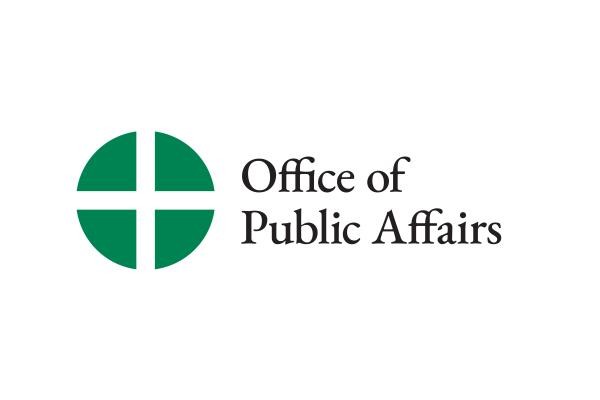Safe Environment Programs Should Be Underway by Late June, Says Head of Bishops Office for Child, Youth Protection
WASHINGTON (March 7, 2003) -- Safe environment programs to protect children and youth should be in the planning process by June 20 and fully implemented for the 2003-2004 school year, said Kathleen McChesney, executive director of the U.S. Bishops' Office of Child and Youth Protection.
WASHINGTON (March 7, 2003) -- Safe environment programs to protect children and youth should be in the planning process by June 20 and fully implemented for the 2003-2004 school year, said Kathleen McChesney, executive director of the U.S. Bishops' Office of Child and Youth Protection.
The deadline was noted in a three-page paper outlining requirements for diocesan safe environment programs that was sent to all dioceses in late February. A copy of the paper, titled "Safe Environment Programs," can be found on the United States Conference of Catholic Bishops' website atwww.usccb.org/comm/envguide.shtml
The Bishops'Charter for the Protection of Children and Youth, adopted last June in Dallas, requires that dioceses/eparchies establish "safe environment" programs.
According to the guidelines, a diocesan safe environment program must include awritten code of conductsigned by employees and volunteers who work with young people. It also requires "training of parents, ministers, educators, church personnel, volunteers and othersregularly involved with minors as to the issue of abuse of children," including sexual abuse.
A safe environment program also includestraining programs for children and young people that include"age appropriate materials pertaining to personal safety."
"This includes information about improper touching and relationships. Children are not expected to be fully knowledgeable about child abuse or of the laws governing care of children but they need to know when they should seek assistance from a trusted adult," the guidelines state.
The safe environment programs also must include "training relating toprevention, identification, and response and reporting" for ministers, educators, parents, volunteers, church personnel and others who have regular contact with youth.
The program should involve parents.
"Toreach as many parents as possible, attempts should be made to provide various types of instruction. Multiple delivery methods could include formal training sessions led by experienced child-safety professionals, independent reading material, videos, or information posted on the diocesan web-site," the guidelines state.
Programs must be on-going.
"Due to the dynamic nature of parish life and personnel turnover, safe environment programs must be incorporated into the long-term mission of dioceses/eparchies," the guidelines state.
The guidelines also stressedbackground checks, noting that "background investigations of personnel who have regular contact with minors must be conducted. Such investigations are best conducted by a reputable professional agency, law enforcement or social service agency�. Background investigations should include criminal history checks of the employee/volunteer." Where lawful, the employee/volunteer should be asked if they have ever been accused of or investigated for an act of abuse or harassment. References must be checked.
The establishment of "safe environment" programs by the dioceses/eparchies will be addressed in an annual public report.
The guidelines were included in a letter to bishops from Bishop Wilton Gregory, president of the USCCB. The letter also outlined other efforts of the Office for the Protection of Children and Youth.
They included
- Development of protocols for and the start of an audit to ascertain compliance with the Charter for Protection of Children and Youth by late June.
- Assisting the National Review Board in preparing a report on descriptive and statistics information on offenders, victims, the nature of the offenses and its financial impact, with a preliminary report expected by early June 2003.
- Assisting the National Review Board in its study of causes of the sexual abuse crisis, with the researcher selected by early June 2003.
"As these audits and studies are conducted it is important that we reaffirm our promise to address the evil of sexual abuse of minors by priests and deacons. Our obligation to protect children and young people and to prevent sexual abuse follows from the mission and example given to us by Jesus Christ Himself, in whose name we serve."


